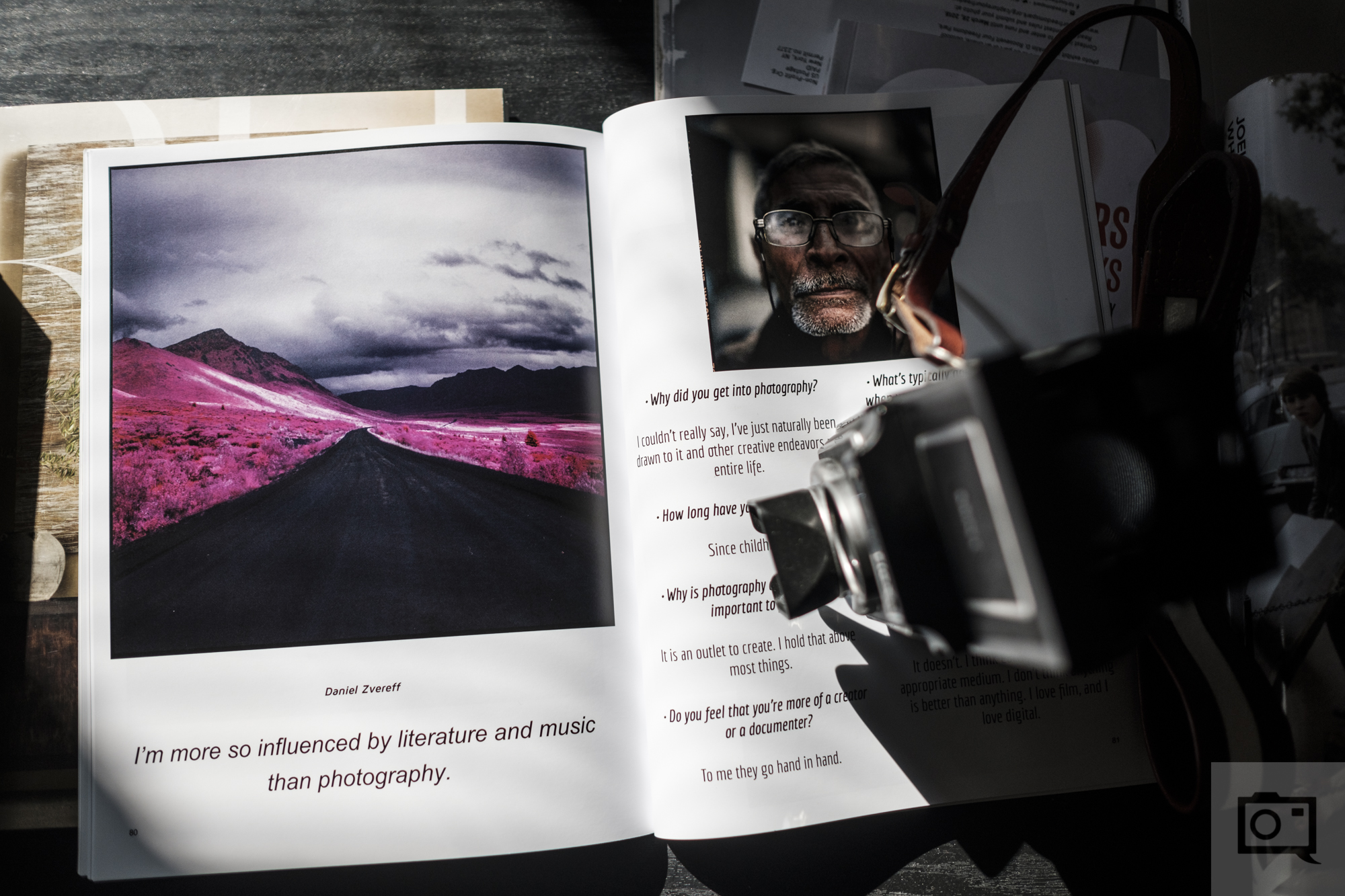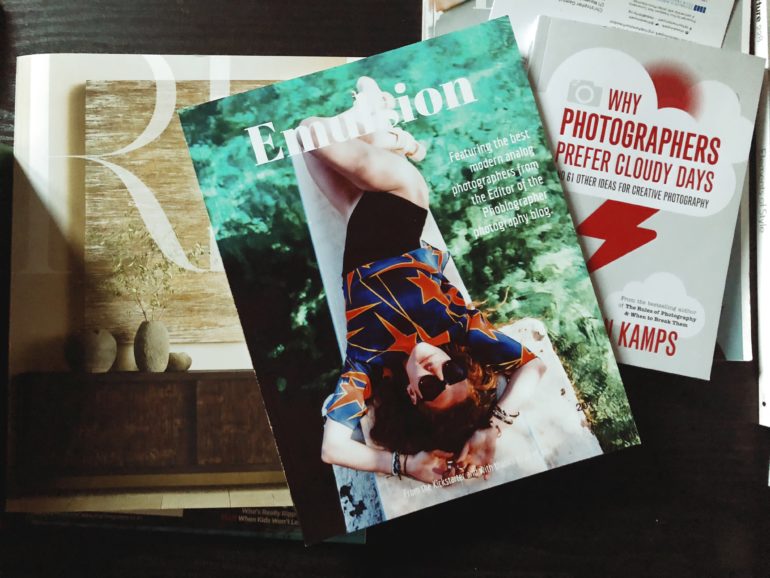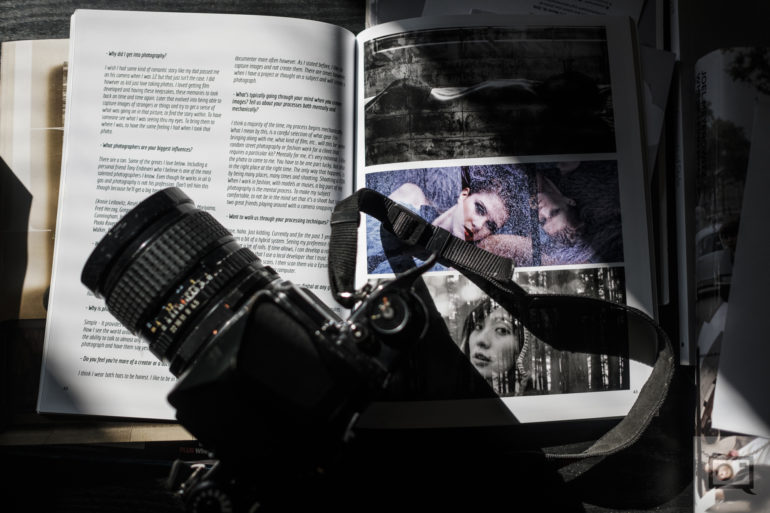Last Updated on 09/03/2018 by Mark Beckenbach
I spent a year rounding up the work of some of the best analog photographers for a zine, and I learned so much along the way.
It’s 2018; who the hell in their right mind would want to sit there and create a zine? Well for one, me. In fact, tons of photographers do it for their own marketing purposes. Emulsion, my latest zine and experiment with my company, was more or less a labor of love for a year. Editorially, I had no help. Business wise, I need to thank my good buddy Justin Kirck for helping to keep me sane throughout the process. Kickstarting this was difficult, going through all the submissions was daunting, laying out and coordinating all the assets was draining, and getting all of this printed was as smooth as it could have possibly been from Blurb with all the variables we had. But after a year, I did it. Though I’m very forward about typically saying “we” on this blog, this venture was something specifically spearheaded and done by me.
This all started with an idea; I wanted to find a way to be experimental. Ever since the failure of La Noir Image’s Kickstarter, I was still committed to making a zine or magazine of some sort. Making one was not only a gut feeling, but came from my heart too. So many photographers don’t print their images these days, but if you can only get those prints into the hands of folks, they’ll start to understand it. I liken the experience of the print to a Leica product. You’ll scoff at them all day and night, but most folks truly don’t understand the Leica company. They’re a premium product and often way overpriced, but they’re a statement as a photographer. At 31 years old, I now own two Leica film cameras that I use weekly, but I worked towards them. They took planning and convincing to purchase them. I found ways to make them pay for themselves. That’s inherently what a zine is like. Magazines are dying in many ways–at least in the bigger scheme they are. But here in NYC, if you walk into any newsstand or bookstore, you’ll see newer breeds like Kinfolk and Elements of Style doing pretty darned well.
So why do they stand out so much? It’s the interpersonal experience that you have with it. It starts with the paper; as hipster as this is going to sound, you want to source quality materials to build a quality product. Hold most magazines these days and you’ll see that the materials are thin, tear easily, and when they come in the mail they’ll often be dogeared or something. But a high end zine isn’t like that. There is quality shipping involved, less destruction, etc. At least in my case, I wanted to create something higher-end than most magazines but something not as high-end as a dedicated photo book. However at the same time, I wanted something that would look great on your living room table, your coffee table, in your hands as you commute to work, and overall something that would inspire folks to get out there and shoot.
These words wax romantically about the zine creation process, but in truth it was incredibly difficult. Finding a printer (in this case Blurb) was sort of difficult to do as I weighed options. Ensuring that we got the money from Kickstarter was also difficult. But thanks in part to a massive donation from Tokina/Hoya, we were able to do it. What I learned is that more and more folks will back your Kickstarter after it has been guaranteed to be funded and happening. So I’m keeping that in mind for the next one–and there will indeed be another zine.
“So many photographers don’t print their images these days but if you can only get those prints into the hands of folks, they’ll start to understand it. “
At the moment of my writing this, there are still things I’m trying to figure out; the promotion of the zine and how to get more sales, a launch party where I can get it into people’s hands, and other ways that I can get folks interested. But I’m fighting an uphill battle: the majority of people like receiving content online or via television. And this is a different product designed for folks who sometimes want to get away from social media and all that other stuff online. I mean, when was the last time you picked up a book? You! Yes you reading this! Think about that. I’m not talking about walking into a bookstore and making a purchase simply because of how cozy you feel in the space, I mean when was the last time you sat and read through some content that was physical and tangible.
What I discovered is that there is indeed a really big market for this. I mean, look at Polaroid and Fujifilm Instax. There is surely something to be said about tangible products. Heck, this zine, Emulsion, is all about film photography and we had well over 1,000 applications for photographers to be featured. There is surely something out there even if it is a niche product. As I put it in the hands of more and more people, I hear nothing but positive feedback about how gorgeous it is.
So what am I going to do for the next one? I’m leaning towards either Polaroids, Fujifilm Instax images, or black and white street photography. There’s a whole lot of variables that I think are in the air about that, especially with how I’m going to make money off of it. With Emulsion, I honestly made less than $1,000. A lot needs to be figured out. But overall, I’m tackling a much bigger project than other zines do.
You can pick up your own copy of Emulsion right here.





